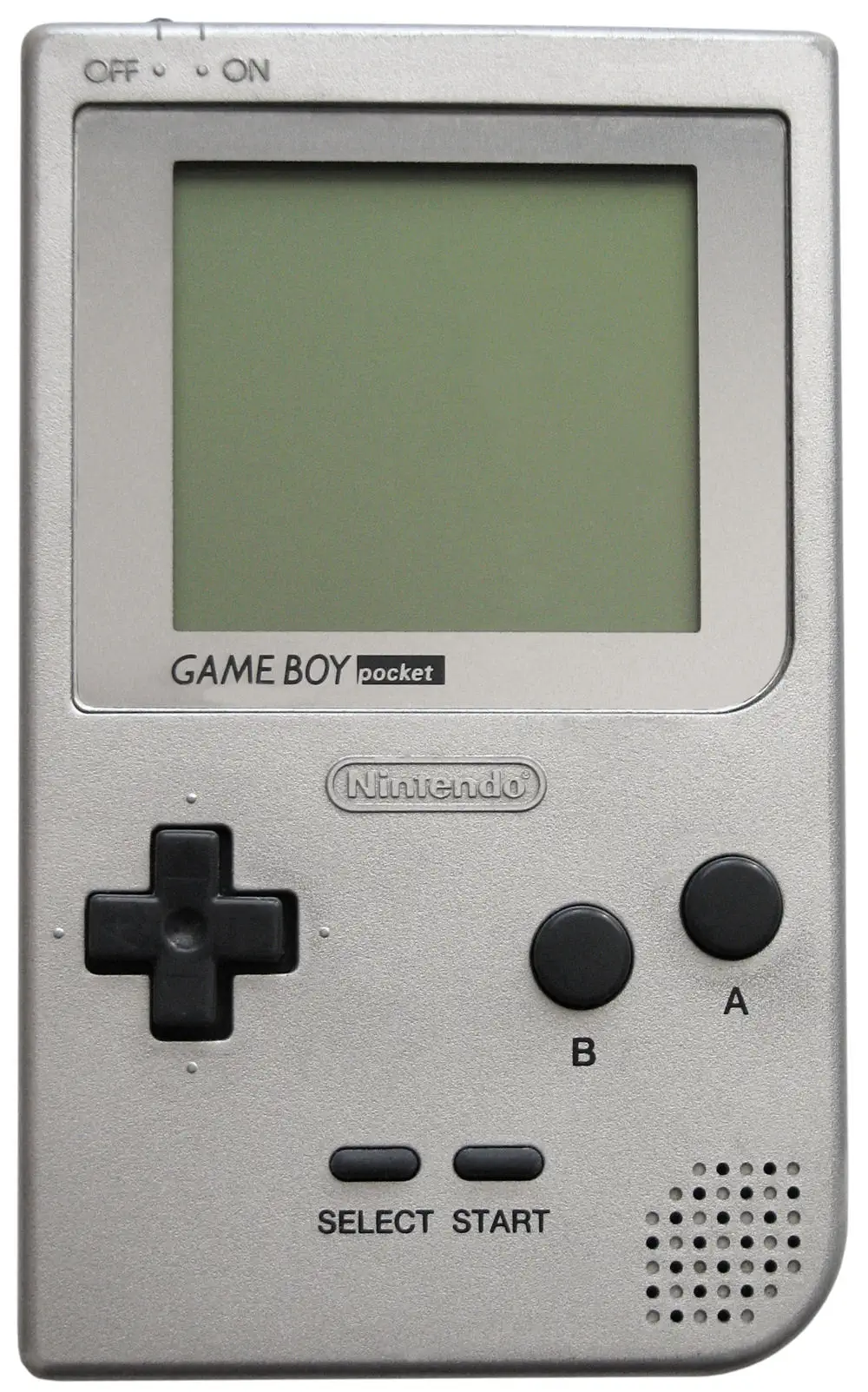Introduction
The Game Boy Pocket, released by Nintendo in 1996, was a slimmer and lighter version of the original Game Boy, aimed at enhancing portability and improving the gaming experience without a complete overhaul. The Pocket retained the familiar control layout and basic design of the original Game Boy but was reduced in size and weight, making it easier to fit in a pocket or small bag. This redesign addressed one of the few complaints about the original Game Boy: its bulkiness. The Game Boy Pocket also used only two AAA batteries, which still provided around 10 hours of playtime, significantly improving convenience and reducing weight.
One of the most noticeable improvements was the new, high-contrast display. Unlike the original Game Boy’s screen, which had a greenish tint and could be difficult to view under certain lighting conditions, the Game Boy Pocket featured a true black-and-white display, which made game visuals clearer and sharper. This change was especially appreciated for games that relied on precision, like platformers or puzzle games, as the display was easier to see and offered a more pleasant gaming experience. However, like the original Game Boy, it did not have a backlight, so external light was still necessary.
The Game Boy Pocket was fully compatible with the original Game Boy’s game library, allowing players to enjoy classics like Tetris, Super Mario Land, and Pokémon Red and Blue. Its introduction renewed interest in the Game Boy line, keeping it relevant even as more advanced handhelds appeared on the market. The Game Boy Pocket served as an essential update that sustained the Game Boy’s popularity until the release of the Game Boy Color, making it an important part of Nintendo’s handheld legacy and a favorite among fans looking for a more portable, user-friendly version of the iconic Game Boy.
VRAM: 8kB
RAM is SRAM Sound Chip need info Sound 4 channels: 2 square wave, 1 wave table, 1 noise Display Chip need info Display 160x144 mono Best Color monochrome Graphics 160x144 monochrome Sprites need info System OS Proprietary

